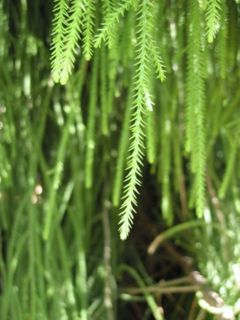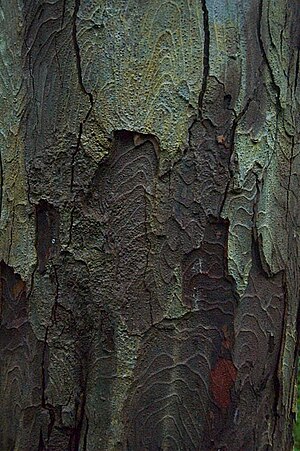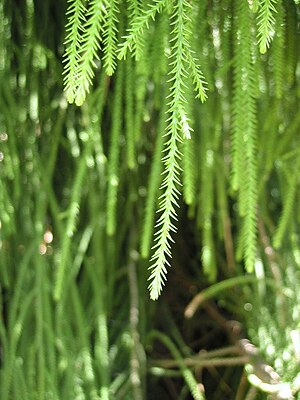Dacrydium cupressinum: Difference between revisions
imported>W. Frank (geographical location and rearranging sentences) |
imported>Pat Palmer mNo edit summary |
||
| (2 intermediate revisions by 2 users not shown) | |||
| Line 1: | Line 1: | ||
{{subpages}} | |||
{{ Dambigbox | Dacrydium cupressinum | Tree }} | |||
{{Taxobox | {{Taxobox | ||
| color = lightgreen | | color = lightgreen | ||
Revision as of 20:54, 29 September 2020
- The content on this page originated on Wikipedia and is yet to be significantly improved. Contributors are invited to replace and add material to make this an original article.
| Dacrydium cupressinum | ||||||||||||||
|---|---|---|---|---|---|---|---|---|---|---|---|---|---|---|
 Juvenile Rimu foliage
| ||||||||||||||
| Conservation status | ||||||||||||||
|
least concern
| ||||||||||||||
| Scientific classification | ||||||||||||||
| ||||||||||||||
| Binomial name | ||||||||||||||
| Dacrydium cupressinum Sol. ex Lamb. |
Dacrydium cupressinum (Rimu) is a large evergreen coniferous tree endemic to the forests of New Zealand. It was formerly known as "red pine" by the European colonists, although this name is misleading since it is not a true pine but a member of the southern conifer group the podocarps. Red pine has fallen out of common use and the Māori name Rimu is now used.
Rimu grows throughout New Zealand, in the North Island, South Island and Stewart Island/Rakiura. Although the largest concentration of trees is now found on the West Coast of the South Island, the biggest trees tend to be in mixed podocarp forest near Taupo (e.g., Pureora, Waihaha, and Whirinaki Forests).
It can be a large but slow-growing tree, growing as high as 50 m tall, though most surviving large trees are 20 to 35 m tall. There are also historical accounts of exceptionally tall trees of about 60m height which grew in dense forest near the small town of National Park in the central plateau of the North Island of New Zealand. (As the name suggests, this small town is located close to Tongariro National Park, New Zealand's first national park).
It typically appears as an emergent from mixed broadleaf temperate rainforest, although there are almost pure stands (especially on the west coast of the South Island). Its lifespan is approximately 800 to 900 years. Diameters of these trees may exceed 2 m at breast height.
The leaves are spirally arranged, awl-shaped, 3 to 6 mm long on juvenile plants, and 2 to 3 mm long on mature trees. It is dioecious, with male and female cones on separate trees; the seeds take 15 months to mature after pollination. The mature cones comprise a swollen red fleshy scale 6 to 10 mm long bearing one (rarely two) apical seeds 4 mm long. The seeds are dispersed by birds which eat the fleshy scale and pass the seed on in their droppings; they are an important food resource for some species, particularly the Kakapo, whose breeding cycle has been linked to rimu's cone production cycle.
Uses
Historically, Rimu and other native trees such as Kauri and Totara were the main sources of wood for New Zealand, including furniture and house construction. However, many of New Zealand's original stands of Rimu have been destroyed, and recent government policies forbid the felling of Rimu in public forests, though allowing limited logging on private land. Pinus radiata has now replaced Rimu in most industries, although Rimu remains popular for the production of high quality wooden furniture.
References
- Conifer Specialist Group (1998). Dacrydium cupressinum. 2006 IUCN Red List of Threatened Species. IUCN 2006. Retrieved on 12 May 2006

